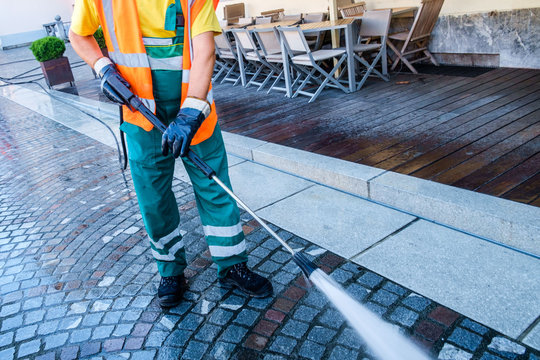Introduction
Street stones are a hallmark of urban design, lending character and history to streetscapes worldwide. However, these surfaces can become stained and worn over time, diminishing their beauty and safety. Regular cleaning is essential not only for aesthetic reasons but also tänavakivide puhastamine for preserving the integrity of the stones. This article explores effective methods for cleaning street stones, the benefits of maintenance, and sustainable practices for keeping urban spaces vibrant.

Why Cleaning Street Stones Matters
- Aesthetic Improvement: Clean street stones enhance the overall appearance of streets and public areas, making them more attractive to residents and tourists.
- Safety Enhancements: Accumulated dirt and algae can create slippery surfaces. Regular cleaning reduces the risk of accidents and ensures safer navigation for pedestrians and vehicles.
- Increased Longevity: Maintaining clean surfaces helps prevent damage from grime buildup, extending the life of the stones and reducing long-term maintenance costs.
Effective Cleaning Techniques
- Pressure Washing:
- Overview: A powerful method for removing stubborn dirt, stains, and organic growth.
- Best Practices: Use a pressure washer with a suitable nozzle and adjust the pressure to avoid damaging the stones. Work in sections and rinse thoroughly to remove debris.
- Chemical Cleaners:
- Overview: For tough stains, chemical solutions can be highly effective.
- Application: Select cleaners specifically designed for stone surfaces. Always test in a small area first to avoid potential damage, and follow up with a thorough rinse.
- Manual Scrubbing:
- Overview: Ideal for smaller areas or delicate stone types, manual scrubbing can be very effective.
- Method: Use a stiff-bristled brush and a mixture of warm water and mild detergent. Scrub gently and rinse well to remove all soap.
- Natural Solutions:
- Overview: Eco-friendly options like vinegar and baking soda can effectively clean street stones.
- Method: Create a paste with baking soda and water, apply it to stains, then scrub with vinegar. This natural approach is safe for the environment.
Sustainable Cleaning Practices
- Biodegradable Cleaners: Opt for cleaning solutions that are environmentally friendly to minimize impact on local ecosystems.
- Water Efficiency: Collect rainwater for cleaning tasks to conserve resources and reduce water usage.
- Scheduled Maintenance: Regularly scheduled cleanings prevent heavy buildup and make each cleaning session more efficient.
Post-Cleaning Care
- Sealant Application: After cleaning, consider applying a sealant to protect the stones from future stains and weathering.
- Weed Management: Regularly remove weeds from joints to prevent moisture retention and maintain the appearance of the stones.
- Inspection for Damage: After cleaning, check for any loose or damaged stones, addressing issues promptly to prevent further deterioration.
Conclusion
Cleaning street stones is a vital aspect of urban maintenance that enhances safety, aesthetics, and longevity. By utilizing effective cleaning techniques and adopting sustainable practices, cities can maintain the charm of their streetscapes while ensuring they remain functional and safe for all. With proper care, street stones will continue to be a beautiful and enduring feature of our urban environments, connecting us to the history and character of our cities.

